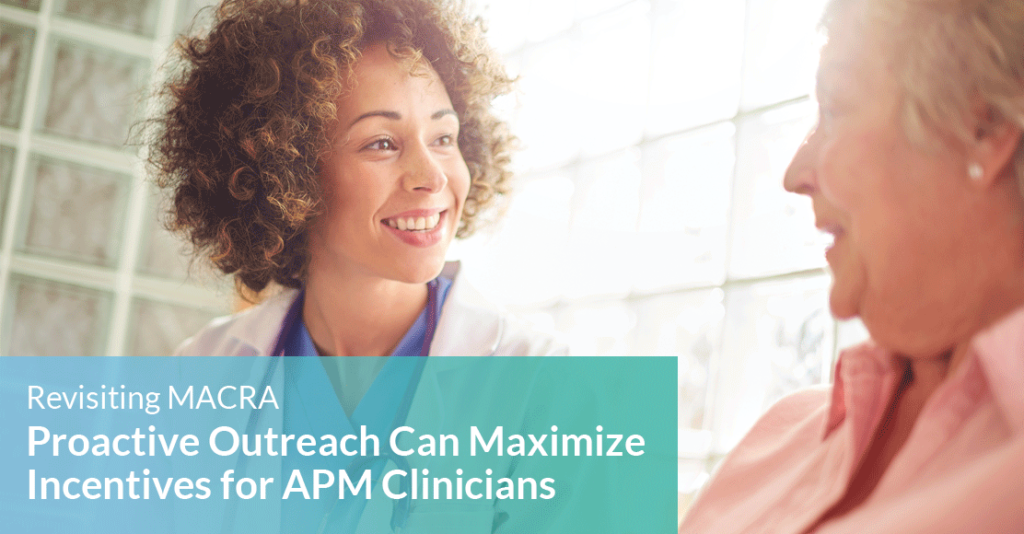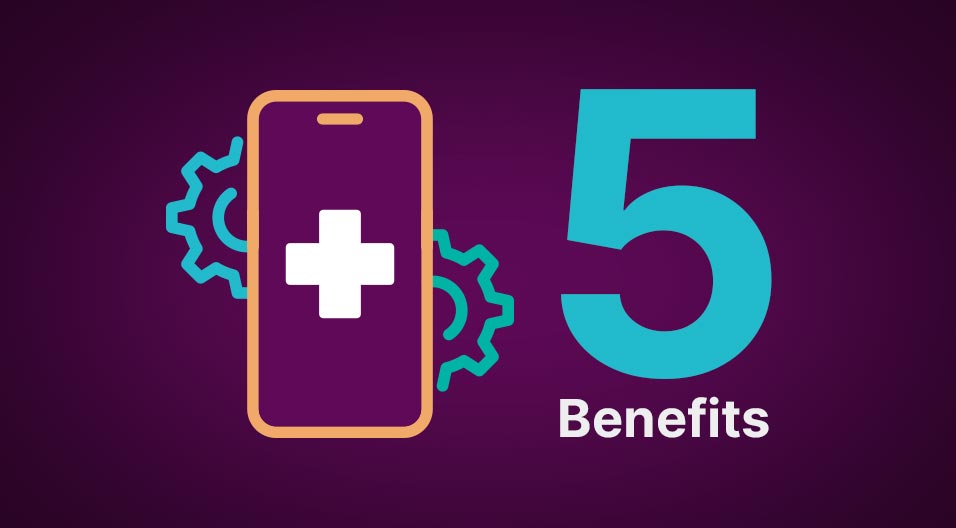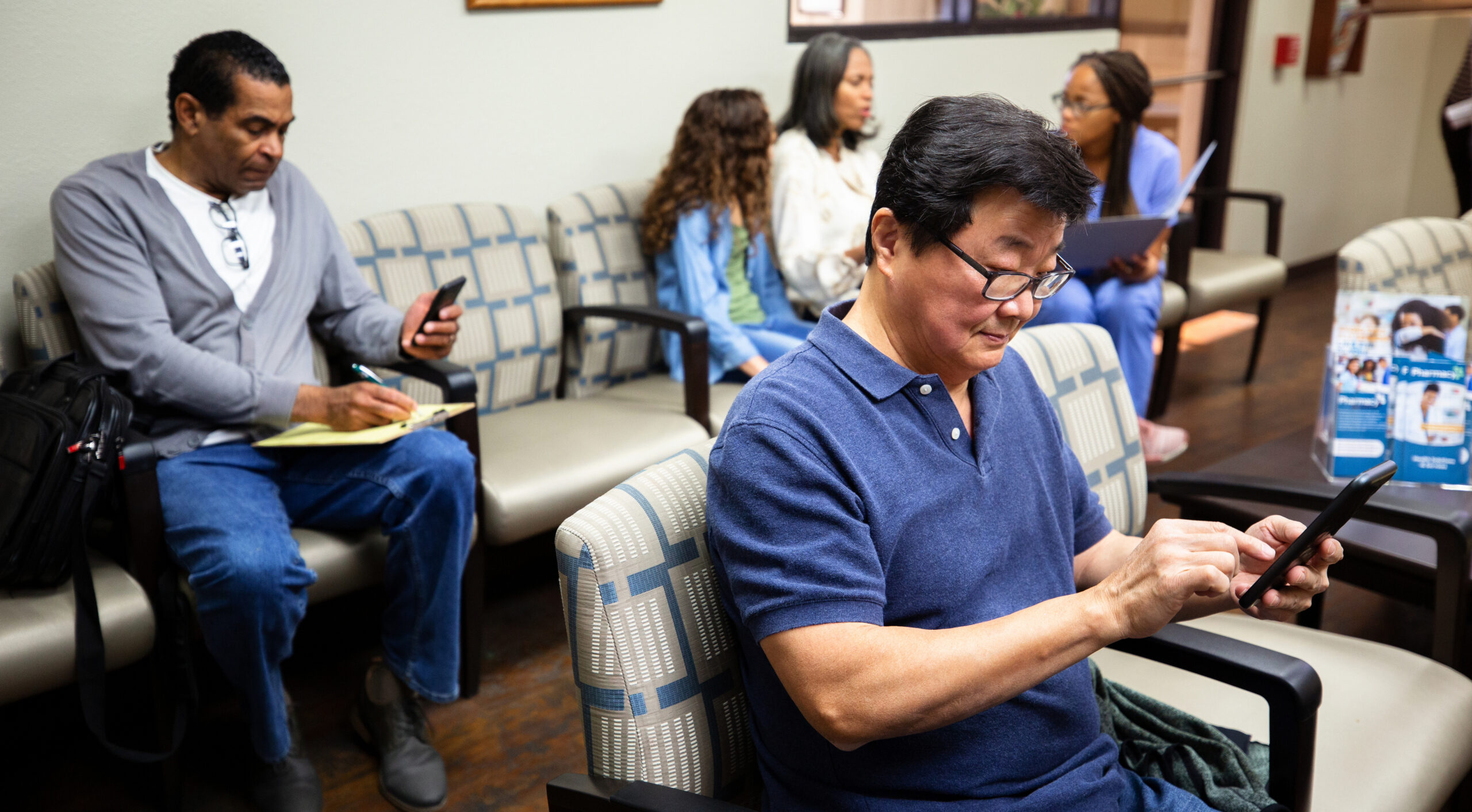This is the final part of a blog series entitled “Revisiting MACRA;” see parts one and two. We also invite you to check out this free guide called “Leveraging Automated Outreach to Succeed in MACRA.”
When most clinicians hear MACRA, they often associate it with another acronym: MIPS. Many, in fact, use the terms interchangeably. However, in addition to MIPS there is another path to maximizing value-based incentives under MACRA, which is through APMs.
APMs, which stands for Alternative Payment Models, is one of the two MACRA pathways, the other being the Merit-Based Incentive Payment System or MIPS. The Centers for Medicare and Medicaid Services (CMS) estimates that approximately 4% of clinicians qualify for this program, which explains why MIPS is more top of mind for most clinicians.
To qualify for the APM path, providers must demonstrate that they are already committed to delivering high-quality and cost-efficient care, and there are two sub tracks: Advanced APMs and MIPS APMs.
- Advanced APMs: To be eligible for this track, clinicians must be participating in an APM that is: 1) using certified electronic health record technology (CEHRT); 2) reimbursing participating providers based on quality measures comparable to that of MIPS; and, 3) either assuming more than the nominal amount of downside risk or participating in a certified medical home model; as well as meet levels of Medicare Part B payments or patient thresholds. If these criteria are met, clinicians are exempted from MIPS reporting and payment adjustments and receive a 5% Medicare Part B lump sum payment bonus.
- MIPS APMs: APMs that do not meet the Advanced APM criteria are classified as MIPS APMs. Clinicians participating in MIPS APMs are not eligible for the aforementioned 5% bonus payment and are subject to a modified version of MIPS reporting referred to as the APM Scoring Standard. It should also be noted that clinicians participating in an Advanced APM may still be subject to the APM Scoring Standard if they do not meet the payment and patient thresholds.
Patient Outreach Strategies to Maximize MACRA APM Incentives
This last part of the series focuses on how patient outreach strategies can drive high performance for clinicians that qualify for the Advanced APM track. For for those interested in how to leverage patient outreach to meet MIPS requirements, check out this previous post. Specifically, we focus on accountable care organizations (ACOs) that assume downside risk and organizations participating in Bundled Payments for Care Improvements Advanced (BPCI Advanced), both of which qualify as Advanced APMs.
Patient Outreach Helps ACOs Meet Quality Benchmarks
MACRA was designed to encourage providers to move into APMs by offering added incentive to those who take accountability for the quality and cost of care they deliver, which is why members of ACOs that assume two-sided risk may qualify for the Advanced APM track. In particular, clinicians participating in Medicare Shared Savings Program (MSSP) Tracks 1+, 2, and 3 ACOs, as well as Next Generation ACOs, may be eligible to bypass MIPS requirements and enjoy potentially greater returns.
In order for member clinicians to truly capitalize on the bonus payments offered through the Advanced APM track, it’s imperative that their ACOs generate shared savings and avoid shared losses. Automated patient outreach can help accomplish this by empowering ACOs to meet and exceed MSSP quality performance benchmarks, without the need for additional resources.
Successful ACOs must ensure that community members are receiving the right care at the most appropriate time, and this requirement is reflected in various MSSP quality measures. As such, one of the biggest challenges that ACOs face is the need to reach large, oftentimes complex patient populations to keep them engaged with their health. Automated outreach can help address this by giving providers a scalable way to get in touch with patients to remind them of when they’re due for visits, and typically these interactions can be deployed through multiple methods (i.e. calls or texts messages) and in various languages.
Examples of outreach programs could include automated preventive reminders for Influenza immunization (MSSP measure ACO-14) and colorectal cancer screening (MSSP measure ACO-19), as well as outreach to at-risk populations to improve chronic disease management, such as reminders for eye exams for diabetics (MSSP measure ACO-41), amongst others.
ACOs that do this consistently not only enjoy shared savings by meeting quality measure benchmarks, but help educate, engage, and empower patients as members of their care team. This is one of the tenets of MACRA and is crucial to improving outcomes and lowering costs.
Maximizing Bundled Payment Incentives with Outreach Across Care Episodes
Similar to ACOs, the objective of bundled payments is to increase the quality of care provided to patients in the most cost-efficient manner possible. More specifically, programs like BPCI Advanced seek to optimize cross-continuum care delivery and improve coordination by giving providers lump sum payments for specific episodes of care. To make the most of these payments as well as the bonus payment offered through the Advanced APM track, clinicians must allocate funds appropriately and avoid wasteful spending.
Automated outreach can play a key role in helping clinicians achieve the goals of the BPCI Advanced program, from patient activation through recovery. Take, for example, a bundle for an outpatient procedure, which is new under the BPCI Advanced model. Ensuring that there are meaningful communications before and after the care episode could be crucial to its success.
Prior to the episodic procedure, clinicians can leverage automated outreach in a variety of ways, including appointment reminders and delivery of pre-procedure educational information, to ensure that the patient is adequately prepared as well as to improve the likelihood of a positive outcome. Post-procedure, clinicians can increase engagement by deploying multi-touch programs designed to gauge recovery, proactively identify complications, and facilitate prompt resolution of issues before they become adverse events.
By using outreach to engage patients across episode continuums, clinicians can improve the efficiency of the entire care journey and potentially reduce avoidable healthcare utilization. This creates an opportunity for clinicians to produce additional savings through the BPCI Advanced program and positions them for greater financial success through the Advanced APM track.
How Will You Leverage Patient Outreach to Succeed in MACRA?
While this marks the conclusion of the “Revisiting MACRA” blog series, the journey to value-based care in the practice setting is only just beginning. Despite the criticisms of MACRA, the legislation is proving to be an effective catalyst for kickstarting the shift from volume to value, both through the MIPS and APM pathways. As demonstrated throughout the series, the benefits of automated patient outreach can be leveraged to drive high performance in this new regulatory environment, and ultimately will help clinicians accomplish the objectives of MACRA.
If your medical group is ready to start exploring patient outreach technology to succeed in MACRA, we invite you to request a demo of the CipherHealth platform. Our single enterprise outreach solution empowers clinicians to engage patients before, after, and in between visits, and advance progress toward achieving value-based care.








